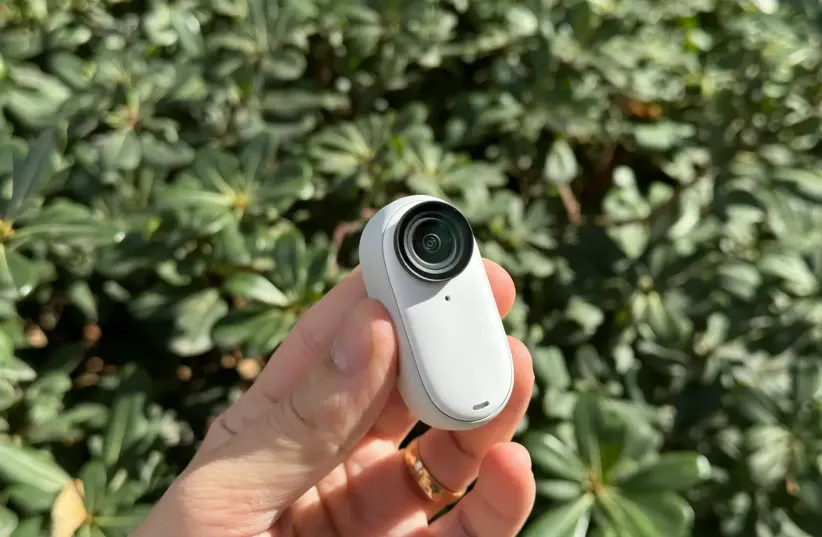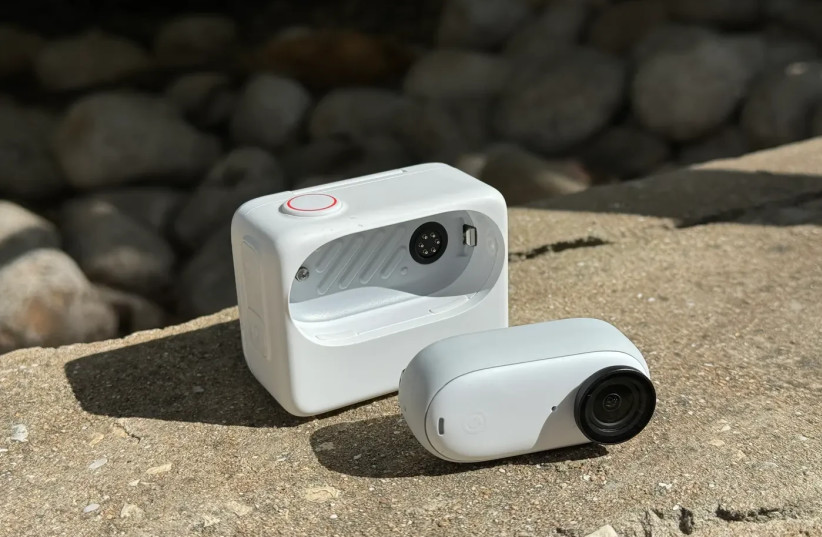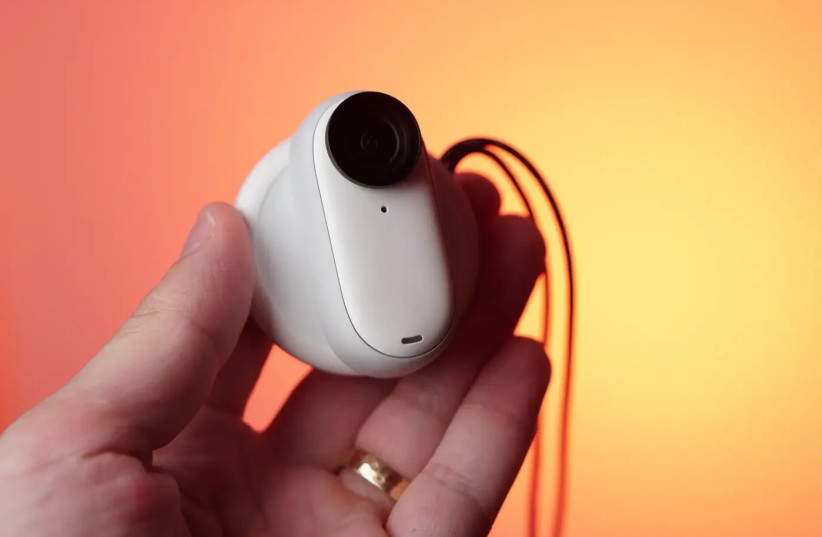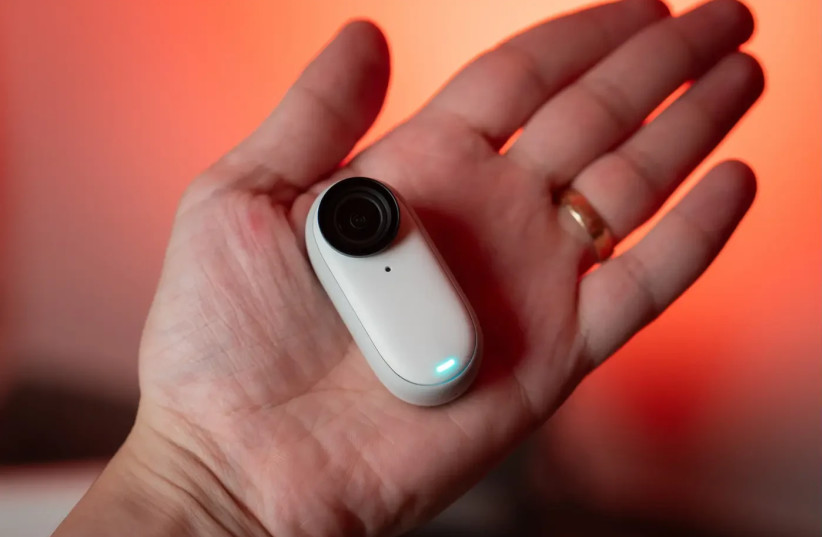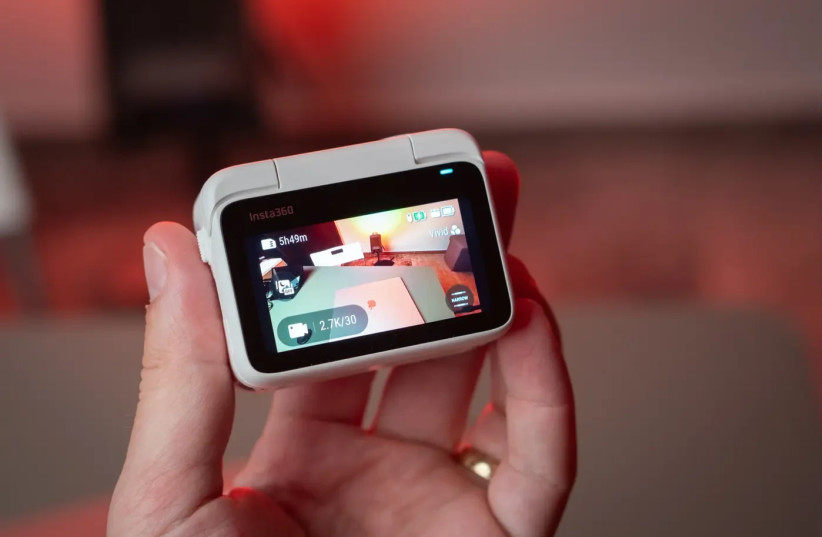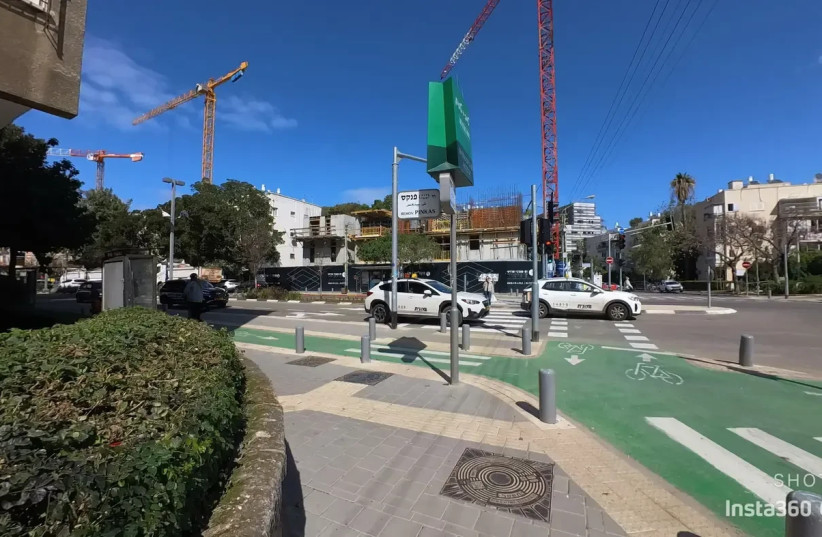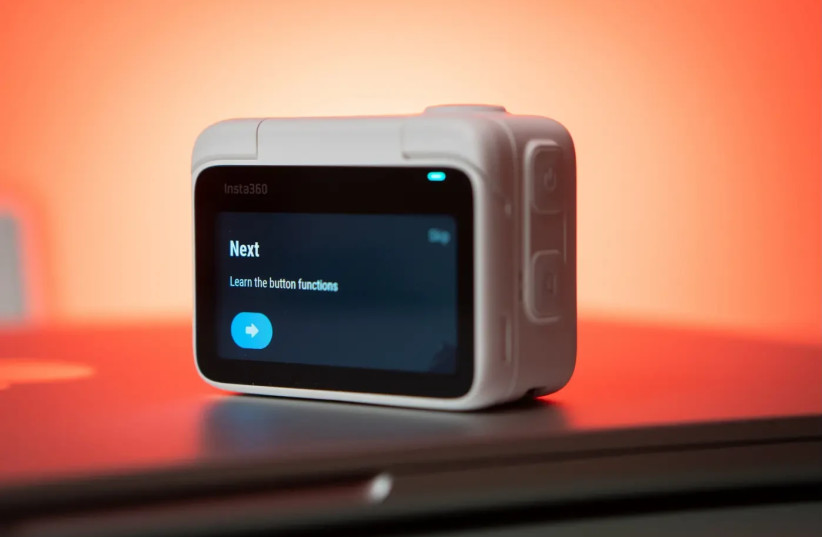The extreme camera market is inundated with numerous models offering similar features at varying prices. Amid this competitive space, the Insta360 Go 3 stands out prominently, resembling a large sugar cube with a lens, boasting two key elements: the Action Pod, adding a new dimension to the shooting experience, and a unique vision.
Who is it suitable for? We got it for review courtesy of the Bag network - and returned with answers.
Design: For those unfamiliar, the Insta360 Go 3 is a tiny camera in the size of a sugar cube (or candy, you decide), designed to allow you to document the world - and primarily yourself - in an entirely new way. The camera body is durable, even underwater (up to 5 meters deep), and the magnetic back allows you to attach it to a wide variety of accessories.
However, the most significant innovation in the Go 3 isn't the camera itself but its new charging case, called the Action Pod by Insta360. The case transforms the small Go 3, which looks like a sugar cube, into a GoPro-style action camera. The Action Pod features buttons to control the camera and a foldable 2.2-inch touchscreen for monitoring shots.
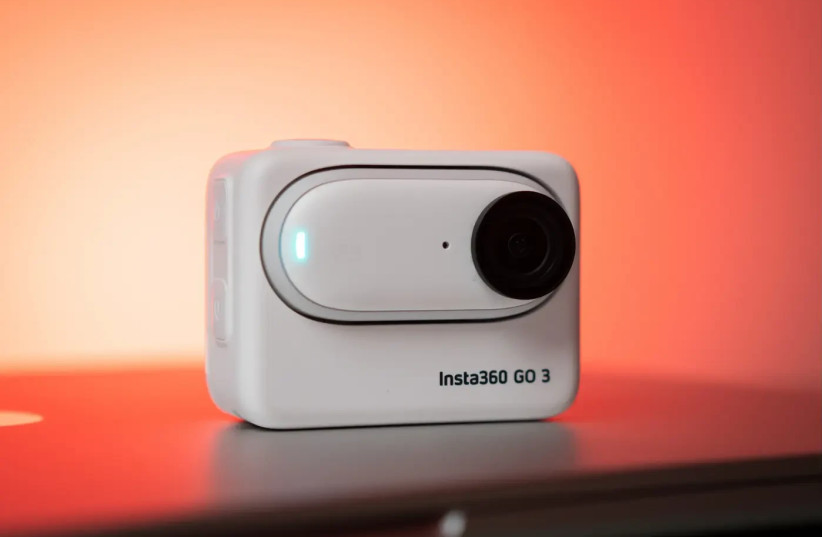
The camera itself is slightly larger than its predecessor - it weighs 9 grams (35 grams without the case) and is larger in all directions by a few millimeters. However, it's reasonable to assume you won't notice the difference unless you hold both cameras side by side. Nevertheless, it's important to note that the size difference is significant enough that all Go 2 accessories likely won't fit the Go 3.
The Go 3 connects to the Action Pod via a very strong magnet, which is then locked in place with two clips, one on each side. A button on the side of the case releases the clips, allowing you to remove the camera unit from the magnet. Surprisingly, the connection is very strong, even during running.
Accessories: The package includes three hanging accessories. One accessory, which I find the most useful, is a magnetic pendant that can be worn under a shirt while the camera is attached to it. Another accessory is a hat clip with a customizable headband. Both of these accessories hold the camera very securely. The third accessory is an adjustable stand, which includes a sticky base and a ball head for attaching the camera.
Want more? Two additional compatible accessories are sold separately: a selfie stick and a "monkey tail" for hanging the camera in non-standard places, such as wrapping it around.
Shooting Experience: Firstly, we've already mentioned it's tiny and remarkably lightweight. And it's important to dwell on this for a moment because it allows you to easily attach it to almost anything, with the right accessories. For example, using the magnetic pendant, I attached it to my shirt and filmed a routine walk from the car to work from a unique perspective. Sure, it's cool, but after shooting the video, you might find yourself wondering what to do with it. And that's what happened to me.
In any case, similar to previous Insta360 Go models, most operations can be performed with just one hidden button on the bottom of the camera. Additionally, I found it (very!) useful in that it can squeeze into tight places where no other camera can. This means you can shoot from special and creative angles, say through small items or tight spaces.
Image and Video Quality: First of all, some dry details. The camera offers a resolution of 2.7K (yes, you won't find 4K here, unfortunately). It also includes the FreeFrame mode, allowing you to adjust the video aspect ratio, choosing between 1:1 square mode, 16:9 wide, or 9:16 narrow for social media posting. Alongside this, as expected, the camera allows shooting in various modes - slow-motion video, sequential photo shooting for time-lapse videos, HDR photos, Interval mode, Starlapse mode (star motion shooting), and Loop mode.
Similar to the Hero 11 Black, the Go 3 has a FreeFrame mode available up to 1440p, allowing you to change the video size ratio after shooting. There's also image stabilization, this time up to the improved maximum resolution of 2.7K, capable of shooting at 30fps. You can choose from four field of view modes (Ultra-wide, Action, Linear, and Narrow), each of which essentially narrows down the field of view. This means you're not limited to an extremely wide fisheye view and can customize the look of your shots as desired or needed.
Review | Shooting in Action Mode with the Insta360 Go 3
Review | Shooting in Linear Mode with the Insta360 Go 3
How are the results? Daylight stills display good quality, reminiscent of images taken with a modern smartphone. Even though the videos, despite not being in 4K, are sharp and clear, with accurate colors and balanced lighting. Additionally, the digital stabilization is efficient and can cope with uneven motion, especially in Action mode.
However, it's important to be aware of the limitations typical of action cameras. For example, shooting in fisheye mode causes significant distortion in the image, although many see this as an integral part of the aesthetics of action photography. Additionally, a relatively small sensor, similar to that of most smartphones, leads to lower image quality in challenging lighting conditions and lower detail resolution. And one more small thing - you can also shoot in vertical format (for reels or TikTok).
Battery: On paper, the company says the battery is 50% larger than the previous generation, the Go 2, and it provides up to 170 minutes of work. In practice, under daily conditions, recording in maximum resolution in standard video mode, I managed to get over 2 hours and 30 minutes, which is quite impressive.
There's an app, but you don't really need it: With the Action Pod, there's not much reason to install the app on your smartphone. However, it's still an excellent companion app, convenient to use on larger phone screens where it's easier to see details and change settings. The only downside to using the phone is that it requires giving up regular Wi-Fi connection for the camera's Wi-Fi signal - meaning if you want internet simultaneously, you'll need to ensure you have cellular reception. Additionally, besides remote viewing of what the camera sees, the app includes manual or automatic (yes, with AI) video editing. For advanced users among you, there's also a version for the computer, called Insta360 Studio.
Conclusion: The Insta360 Go 3 can't replace a DSLR, or even a smartphone camera, but it opens the door to shooting at interesting angles you probably won't achieve without it. The tiny size of the camera primarily allows for fun activities - like putting it on your pet and capturing yourselves with minimal effort, even in motion. However, if professional video quality is important to you, like with GoPro, the Go 3 isn't for you, nor is it intended for that. The price? Starting from NIS 1,989, for the 64-gigabyte version, on the Bag network.
